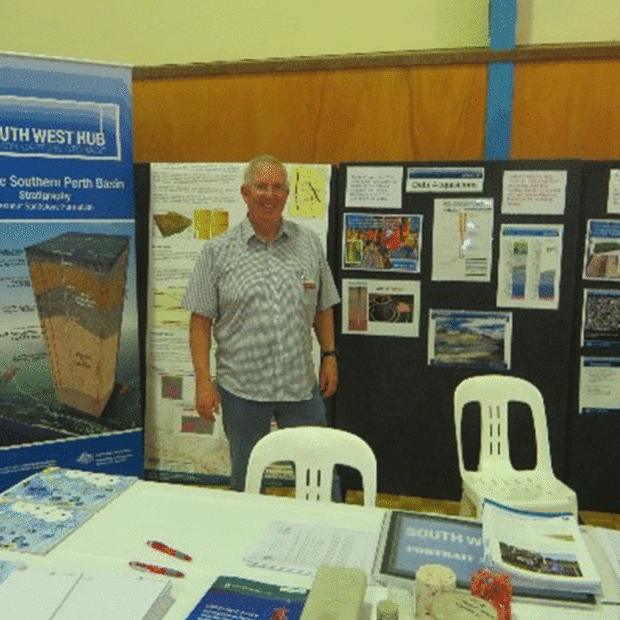Displays help to explain carbon capture and storage
| Date: | Monday, 09 July 2018 |
|---|
The South West Hub Carbon Capture and Storage (CCS) project attracted a lot of attention at the recent Harvey Agricultural Show.
Displays by the Department of Mines, Industry Regulation and Safety (DMIRS) and the CSIRO’s National Geosequestration Laboratory (NGL) presented showgoers with an understanding of the science and technology involved in the project near the town of Harvey, about 125 km south of Perth.
DMIRS CCS Coordinator Dominque Van Gent used maps, stratigraphic cross-sections, drill cores and magnified rock models to give a clearer picture of how the State Government and industry were working together to establish the viability of storing carbon in the Lesueur Sandstone formation in the Southern Perth Basin.
“Many showgoers appreciated being able to discuss the sub-surface detail and how sequestration works,” Mr Van Gent said.

NGL staff demonstrated carbon dioxide detection equipment and conducted simple experiments to explain basic carbon dioxide (CO2) chemistry using a pH meter, soft drinks and fizzy tablets that attracted a lot of interest from younger show patrons.
“Youngsters really enjoyed the hands-on experiments and it was terrific to talk to knowledgeable potential scientists and geologists,” Mr Van Gent said.
The South West Hub project aims to reduce carbon dioxide emissions in Western Australia by capturing CO2 emissions from industrial sources before they are released into the atmosphere.
The CO2 is transported to an injection site where it is pumped deep below the surface for permanent storage in a process called geosequestration.
The South West Hub is a staged project that involves collecting and analysing data and samples from stratigraphic drilling near Harvey.

